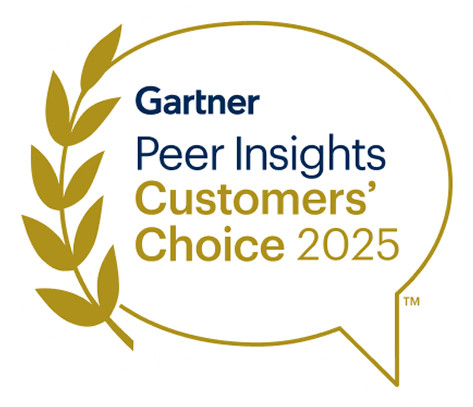How DSPM Reduces the Risk of Data Breaches
The movement of more and more sensitive data to the cloud is driving a cloud data security gap – the chasm between the security of cloud infrastructure and the security of the data housed within it. This is one of the key drivers of the Data Security Posture Management (DSPM) model and why more organizations are adopting a data-centric approach.
Unlike Cloud Security Posture Management (CSPM) solutions, which were purpose-built to protect cloud infrastructure by finding vulnerabilities in cloud resources, DSPM is about the data itself. CSPM systems are largely data agnostic – looking for infrastructure vulnerabilities, then trying to identify what data is vulnerable because of them. DSPM provides visibility into where sensitive data is, who can access that data, how it was used, and how robust the data store or application security posture is.
On a fundamental level, the move to DSPM reflects a recognition that in hybrid or cloud environments, data is never truly at rest. Data moves to different cloud storage as security posture shifts, then moves back. Data assets are copied for testing purposes, then erased (or not) and are frequently forgotten. This leaves enterprises large and small scrambling to track and assess sensitive data and its security throughout the data lifecycle and across all cloud environments.
The data-centric approach of DSPMs is solely focused on the unique challenges of securing cloud data. It does this by making sure that sensitive data always has the correct security posture - regardless of where it’s been duplicated or moved to. DSPM ensures that sensitive data is always secured by providing automatic visibility, risk assessment, and access analysis for cloud data - no matter where it travels.
Because of this, DSPM is well-positioned to reduce the risk of catastrophic data breaches and data exposure, in three key ways:
- Finding and eliminating shadow data to reduce the data attack surface:
Shadow data is any data that has been stored, copied, or backed up in a way that does not subject it to your organization’s data management framework or data security policies. Shadow data may also not be housed according to your preferred security structure, may not be subject to your access control limitations, and it may not even be visible to the tools you use to monitor and log data access.
Shadow data is basically data in the wrong place, at the wrong time. And it is gold for attackers – publicly accessible sensitive data that nobody really knows is there. Aside from the risk of breach, shadow data is an extreme compliance risk. Even if an organization is unaware of the existence of data that contains customer or employee data, intellectual property, financial or other confidential information – it is still responsible for it.
Where is all this shadow data coming from? Aside from data that was copied and abandoned, consider sources like decommissioned legacy applications – where historical customer data or PII is often just left sitting where it was originally stored. And there is also data produced by shadow IT applications, or databases used by niche app. And what about cloud architecture changes? When data is lifted and shifted, unmanaged or orphaned backups that contain sensitive information often remain.
DSPM solutions locate shadow data by looking for it where it’s not supposed to be. Then, DSPM solutions provide actionable guidance for deletion and/or remediation. Advanced DSPM solutions search for sensitive information across different security postures, and can also discover when multiple copies of data exist. What’s more, DSPM solutions scrutinize privileges across multiple copies of data, identifying who can access data and who should not be able to.
- Identifying over-privileged users and third parties:
Controlling access to data has always been one of the basics of cybersecurity hygiene. Traditionally, enterprises have relied on three basic types of access controls for internal users and third parties:
· Access Control Lists - Straight lists of which users have read/write access
· Role Based Access Control (RBAC) - Access according to what roles the user has in the organization
· Attribute Based Access Control (ABAC) – Access determined by the attributes a user must have - job title, location, etc.
Yet traditional data access controls are tied to one or more data stores or databases – like a specific S3 bucket. RBAC or ABAC policies ensure only the right users have permissions at the right times to these assets. But if someone copies and pastes data from that bucket to somewhere else in the cloud environment, what happens to the RBAC or ABAC policy? The answer is simple: it no longer applies to the copied data. DSPM solves this by ensuring that access control policy travels with data, across both cloud environments. Essentially, DSPM extends access control across any environment by enabling admins to understand where data came from, who originally had access to it, and who has access now.
- Identifying data movement, making sure security posture follows:
Data moves through the public cloud – it’s the reason the cloud is so efficient and productive. It lets people use data in interesting ways. Yet the distributed nature of cloud computing means that organizations may not understand exactly where all applications and data are stored. Third-party hosting places serious limits on the visibility of data access and sharing, and multi-cloud environments frequently suffer from inconsistent security regimes.
Basically, similar to the access control challenges - when data moves across the cloud, its security posture doesn’t necessarily follow. DSPM solves this by noticing when data moves and how its security posture changes. By focusing on finding and securing sensitive data, as opposed to securing cloud infrastructure or applications, DSPM solutions first discover sensitive data (including shadow or abandoned data), classify data types using AI models, then determine whether the data has the proper security posture. If it doesn’t, DSPM solutions notify the relevant teams and coordinate remediation.
DSPM Secures Your Cloud Data
Data security in the cloud is a growing challenge. And contrary to some perceptions – the security for data created in the cloud, sent to the cloud, or downloaded from the cloud is not the responsibility of the cloud provider (AWS, Azure, GCP, etc.). This responsibility falls squarely on the shoulders of the cloud customer.
More and more organizations are choosing the DSPM paradigm to secure cloud data. In this dynamic and highly-complex ecosystem, DSPM ensures that sensitive data always has the correct security posture – no matter where it’s been duplicated or moved to. This dramatically lowers the risk of catastrophic data leaks, and dramatically raises user and admin confidence in data security.
<blogcta-big>










.webp)
.webp)


